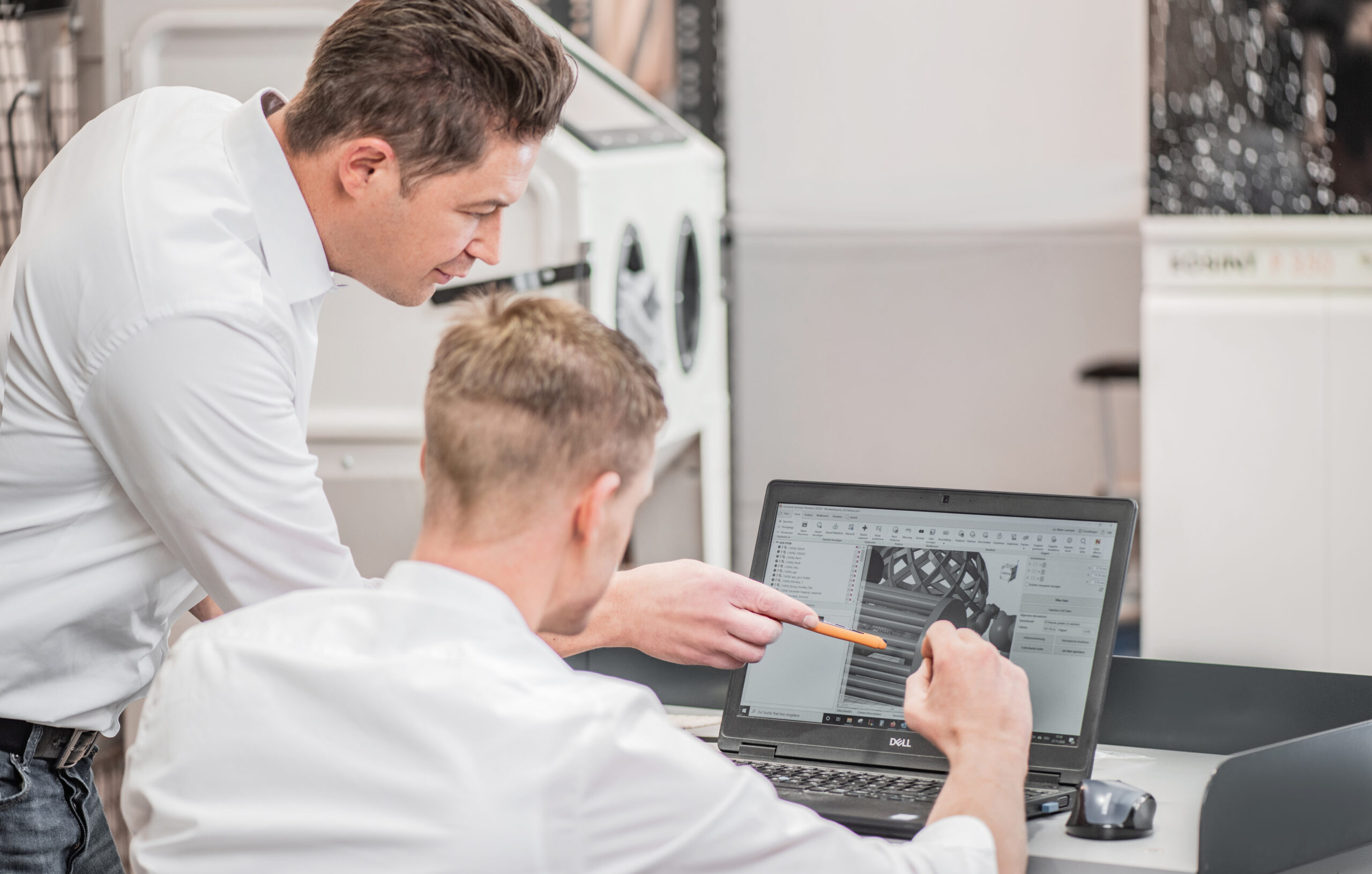3D printing, rapid prototyping, direct manufacturing, have components printed
3D printing of the highest quality
While additive manufacturing processes, e.g. powder, liquid polymer or filament-based, have so far been used mainly for rapid prototyping procedures, these processes, together with the materials suitable for them, have been continually developed further, so that one can now speak of a direct manufacturing approach.
In particular, the selective laser sintering process (SLS, or LS according to DIN EN ISO / ASTM 52900) makes it possible to produce components without support structures, with very delicate details and simultaneously with high mechanical properties. Historically, the SLS process developed in conjunction with the thermoplastic polyamide 12 (PA12) and is now extensively researched and offered with process stability.
This engineering plastic makes it possible to directly manufacture components with high mechanical properties comparable to injection-molded components. The material's high ductility also allows for the design of film hinges, elastic structures, or even flexible elements. However, even this material has its limitations, so much research and development is currently underway into new SLS materials.

A very interesting material for selective laser sintering is the highly flexible and soft thermoplastic polyurethane (TPU). This material exhibits rubber-like properties and can be used for seals, sealing profiles, anti-slip coatings, handles, bellows, or flexible grippers, for example. Especially in combination with the structurally stable plastic PA12, these two materials enable the implementation of the most complex prototypes as well as finished assemblies.
The ability to combine 3D-printed rubber-like components with 3D-printed solid structures enables the realization of completely new prototypes, assemblies and functional components directly for the application.
While customization and small-batch production are becoming increasingly important, these requirements are disproportionate to the high investment costs for correspondingly complex injection molds. For this reason, it is usually more sensible to produce these components directly using 3D printing (direct manufacturing) for small batches. Depending on the component size and complexity, serial components up to 6,000 units are usually more cost-effective to produce using industrial 3D printing than investing in costly injection molds.
In particular, with sensible component design, any assembly steps and the production of several individual components for an assembly can be reduced to a single assembly, which in the best case can be manufactured directly using functional additive technology and also saves weight.
Contact us if you're interested in 3D-printed components, a CAD design tailored to your application, SLS PA12, or TPU powder. We'd be happy to help.




